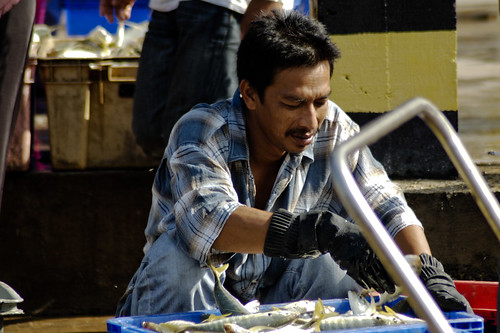Exposure is...

_DSC1601, originally uploaded by hackspot.
Taken with a Nikon D50 and AF Zoom-Nikkor 70-300mm f/4-5.6G lens
Exposure is the sum of 3 things...
1. How quickly light can get inside the camera.. This is affected by the aperture. The size of the hole that lets the light in.. smaller = high f number = less light, bigger = low f number = more light
2. The amount of time light is allowed into the camera.. This is affected by the shutter speed. Faster = less time = less light, ... slower = more time = more light
3. The speed at which the image sensor reacts to the light coming in.. This is the ISO rating. Higher = reacts quicker Lower = reacts slower
A correctly exposed image has these three things in balance to produce the correct amount of light hitting the sensor for the correct amount of time. Giving an image with as much detail as possible with out blown highlights and lost shadow detail. Now, these thigs CAN be chosen by your camera.. but YOU can manipulate these variables to get other desired effects too!
Aperture...
Large apertures, small f numbers have limited Depth of field (DOF). ie. your focal point is sharp but things in front or behind are out of focus. You also need less time for the light to get in, so faster shutter speeds are required. Small apertures, high f numbers, have greater DOF and much more of the image will be in focus. You also need more time for the light to get in, so slower shutter speeds are required and may need a tripod.
Shutter Speed...
Fast shutter speeds ( 1/big number) allow you to freeze action and stop any movement. they also enable you to "hand hold" the camera to take the image. Slow shutter speeds allow you to creatively imply movement by producing motion blur. they also allow good exposue in poor light, and also allow for small apertures for large DOF. BUT.. they require a tripod to prevent camera shake.
ISO...
The higher this is set, the faster you shutter speed can be or the smaller your aperture, BUT you get more "noise" (grain) in the image. Sometimes this is desireable, but it's easy to do in software. Removeing noise is more difficult. Keep this as low as you can unless you can not achieve the shutter speed you need to get the shot at the aperture you've chosen!
Labels: AF Zoom-Nikkor 70-300mm f/4-5.6G, Chendering Fisheries Complex, Nikon D50, People, Photography, Portrait